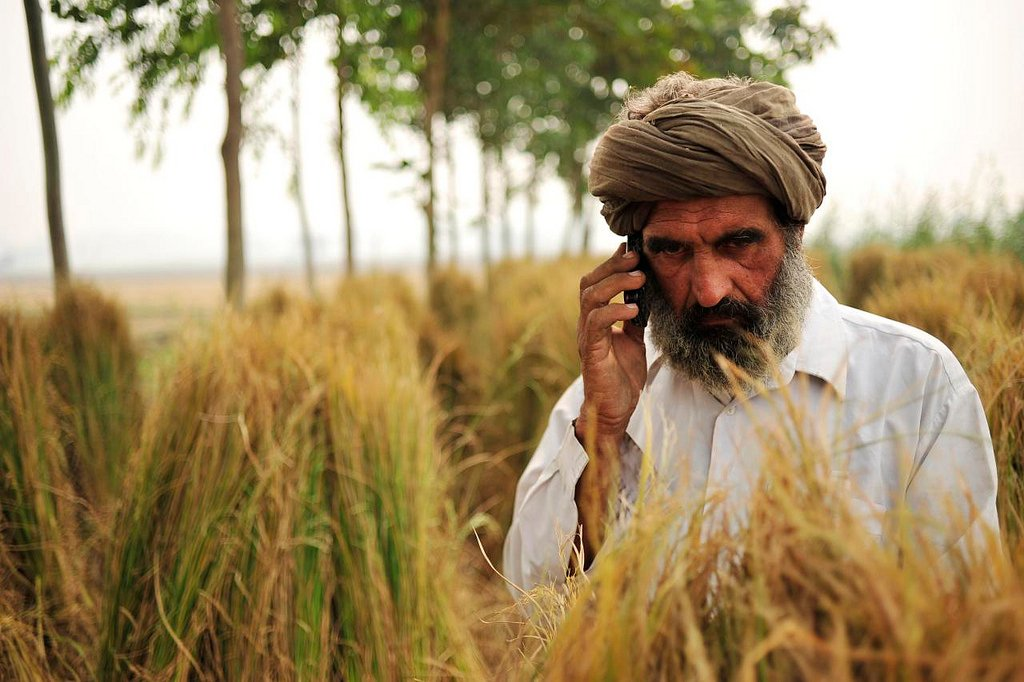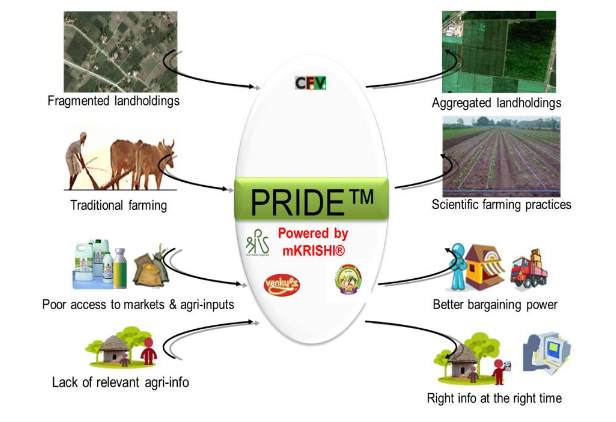“When I was a child, my father used to take me to the fields and explain to me everything he knew about farming. He knew a lot of things, but his knowledge was still vulnerable to changes in the soil he couldn’t predict,” says Dr Vijayaragavan Vishwanathan, the son of a South Indian farmer.
Dr Vishwanathan may have gone from a rural childhood to a career as a nuclear research scientist but, as he explained to GOOD’s Project Literacy, he remembers well the problems facing India’s farmers.

A rice farmer in SE Punjab, India. Image via Flickr user Neil Palmer (cc) of CIAT International Center for Tropical Agriculture
Ancient wisdom passed down the generations is still heavily relied upon in a world ever more interconnected and it is all too easy for rural farmers to be left behind when changes in weather, demand or farming practises take them by surprise.
A recent government study estimated that 32% of India’s rural population is illiterate, compared to 15% in urban areas. Agriculture accounts for up to 18% of India’s GDP and employs more than half of the country’s workers. Yet agricultural communities are among the most deprived in the nation.
What they do have though, is mobile phones. There are nearly a billion in India already and all 1.4 billion Indians are expected to have one by 2020. And that is where mKRISHI comes in.
Hyper-local information
The Progressive Rural Integrated Digital Enterprise (PRIDE) scheme aims to leverage technology to address some of the problems farmers face. Using TCS’s mKrishi technology it delivers information on weather, soil, fertilizer and pesticides that are tailored specifically to a farmer’s land.
It also provides information about new types of seeds and crops that are available on the market along with, crucially, local market price information for agricultural products.
At a stroke, this transforms farmers from individuals reliant on their own experience and local connections to highly informed, networked producers who know what to expect and what the implications of their farming choice are likely to be.

Farmers can group together to get better deals, calculate the benefits of aggregating landholdings and get the latest information on scientific farming practices.
Famers can get advice from agricultural experts whenever they need – for example they can send pictures of their crops and pests captured with mobile phone cameras.
This can all be provided in the farmer’s local language or even in a picture-rich format that enables illiterate farmers to use the system.
The productivity problem
It is not just in the farmers’ interest to boost production. Farmers in India grow 46% less rice per acre than their Chinese counterparts and 39% less wheat.
Indian farmers are locked in to low-value crops such as wheat and rice by habit, a limited knowledge base and the absence of adequate infrastructure such as irrigation. This is despite India’s increasingly affluent urban populations demanding fruit, vegetables and meat instead.

Ploughing with cattle in West Bengal. Image via Flickr user (cc) of International Livestock Research Institute
There is also a problem with farms shrinking as the growing rural population subdivides farmland from one generation to the next.
The average plot in 2010 measured just 1.16 hectares, down from 1.84 hectares in 1980. This fragmentation makes investment in machinery more difficult and reduces individual crop sizes and therefore an individual farmer’s selling power.
All of these issues only strengthen the need for farmers to be able to access information. Identifying crops in demand, locating potential sources of finance for investment in machinery and irrigation and understanding the possibilities of land aggregation are all key to increasing yields and income.
Wider benefits
There is a win for the environment too. By using crops best suited to an area’s resources, only spraying the correct amounts of pesticides and understanding sustainable land management, farmers are investing in the land’s future as well as their own.
Since 2008, more than 20,000 farmers in 400 villages have subscribed to the mKrishi service. Those farmers expect to spend less on pesticides and fertilizers and experience increased crop yields. Moreover, the access to real-time local market prices is enabling farmers to negotiate more effectively with food traders and agents.
The mKrishi platform is also benefiting a broader group of stakeholders in the agricultural value chain. It saves costs for companies servicing farmers, helping them access real-time information of the supply and demand of farmers. This increases the efficiency of the whole system.
The access to field micro-data is also a valuable resource for policy makers and can help enhance the accuracy of agricultural research and planning. Several organisations have approached TCS with an interest in joining the consortium of partners, offering services through the mKrishi platform to farmers.
K. Ananth Krishnan, Vice President and Chief Technology Officer at Tata Consultancy Services has heralded the mKrishi system as pioneer in its field. “Telecommunication is likely to bring about meaningful, large scale, transformation in developing countries, especially in rural areas where infrastructure is limited,” he says. “Information technology has both a business interest and a social responsibility in enabling these transformations. mKrishi is an experiment in this direction.”
A networked community
mKrishi is an award winning technology, having won the Wall Street Journal’s coveted Technology Innovation Award in the wireless technology category. The award recognizes companies, individuals and organizations worldwide for technological breakthroughs in such areas as medicine, software, the Internet, wireless and consumer electronics.
And, of course, farming information is just the beginning. Giving rural communities access to technology has the potential to bring widespread benefits. Creating new channels through which education, finance and healthcare can reach large numbers of people who have traditionally been excluded could greatly increase the benefits already seen.



worth reading who are interesting in agriculture.
Technology will play a pivotal role in unlocking agriculture potential especially in Africa.
This article is very informative.
excellent article for the people who encourage farmers through technology
Hi, Is there any app available for this which can be used for trial? How i can experience this? Is the database in this app relevant to UttarPradesh or limited to Maharastra only?
Thanks.